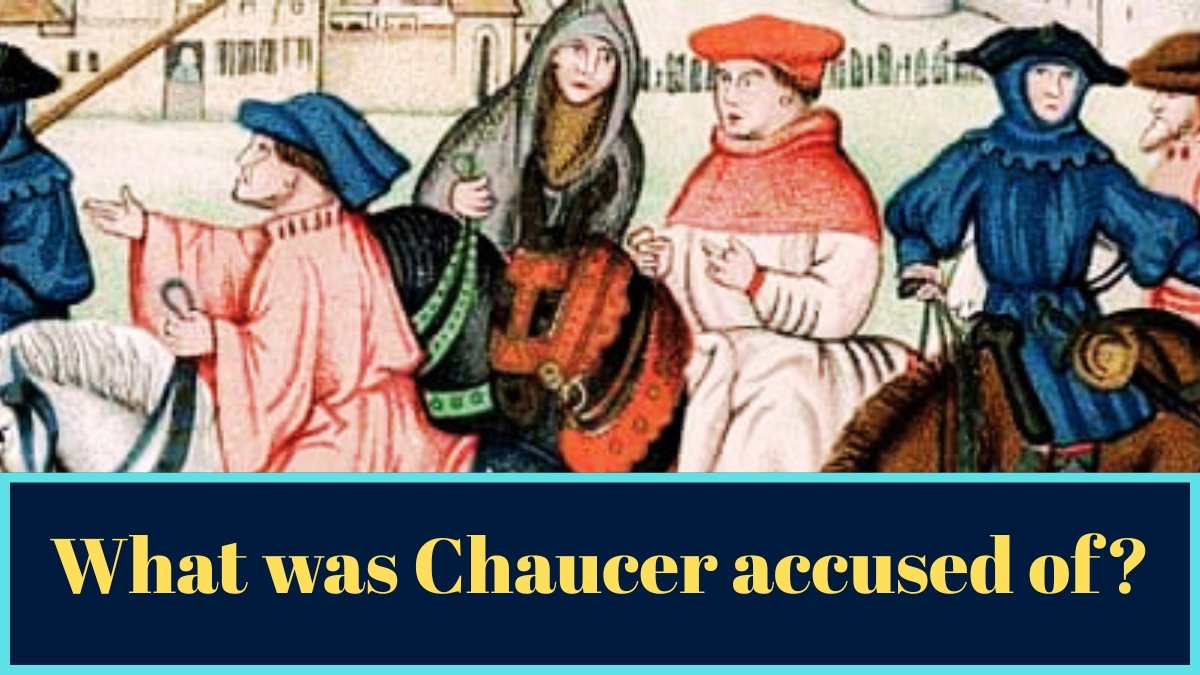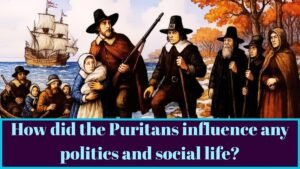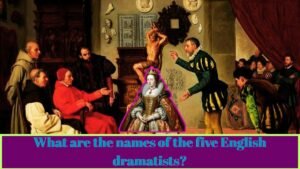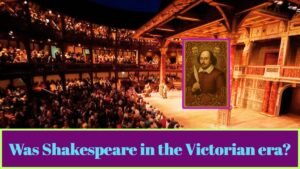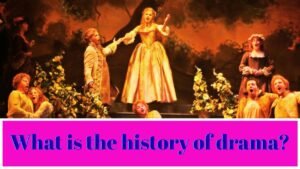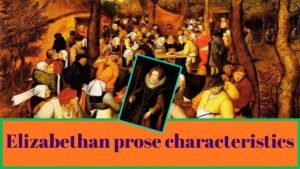What was Chaucer accused of?
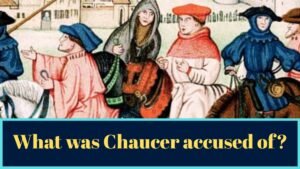
English Period: The Canterbury Tales. So far Chaucer had been merely a borrower, a translator or adapter. He had been a slave to the allegorical convention and his own native genius had found vent only in occasional flashes of realism and humour in his dream allegories. Two of these the House of Fame and the Legend of Good Women-he left unfinished, the former one presumably because he found it too artificial for his taste and the latter because he found it monotonous. Then suddenly his native genius suppressed so long broke forth from its bondage and found full and unhampered expression in the Canterbury Tales. He had seen much, had read much, and must have had a miscellaneous collection of stories to tell. He conceived the idea of a pilgrimage to bring together an assorted company of people as tellers of those tales. The tales interesting enough in themselves acquire additional interest from the vivid pen portraits of the pilgrims who tell them. We are no longer in the world of allegorical abstractions, ancient gods or heroes, but in the real world of living men and women. ushered in the era of modern literature and established himself as the greatest European poet of his time, leaving far behind the contemporary poetry of France and Italy on which he had been nourished. He
The Prologue
The Canterbury Tales begin with a Prologue which constitutes the framework for the tales. Thirty pilgrims including Chaucer have put up at the Tabard inn in Southwark. They are bound on a pilgrimage to the shrine of St. Thomas a Becket at Canterbury. After supper the host of Tabard offers to join the party and be a guide and master of ceremonies. He proposes that to beguile the tedium of the journey each pilgrim should tell two tales on the forward journey and two on the return journey. The teller of the best story to be judged by the host is to be entertained to a supper at the Tabard at the general expense.
The thirtyone pilgrims are drawn from all classes except royalty. The military or fighting class is represented by the Knight, his son and their Yeoman; a Doctor, a Lawyer, a Clerk or Student of Oxford Those and the poet himself represent the liberal professions. connected with the land are a Franklin, a Reeve and a Ploughman; the trade is represented by a Merchant, a Shipman, a Haberdasher, and the Host of the Tabard. The crafts are represer.ted by the Wife of Bath, a Carpenter, a Weaver, a Dyer and a Tapicer or Tapestry-maker. A Manciple (buyer of provisions for a college or Inn of
One is tempted to quote passage after passage from the prologue in illustration of Chaucer’s ironical humour. But the Prologue has to be read whole to be enjoyed. It is enough to say that with the exception of the Knight, the Poor parson and the Ploughman, there is not a single character that escapes Chaucer’s ironical humour. His wide sympathies and tolerant humanity enabled him to give us types of men and women who with minor variations are essentially the same in all ages. We no longer have Summoners and Pardoners, but their progeny remains and carries on the same trades of exploitation and trickery, though under other names and in other forms. Professor Saintsbury denies Chaucer’s pilgrims that element of universality which we associate with the characters of Shakespeare. This is being hyper-critical. He admits they are astonishingly brilliant types. If this means anything, it means they are memorable and a character can’t be memorable without a strongly marked individuality. It is true not all the pilgrims are equally memorable. But who can forget the “verray parfit gentle knight”, or the prim Prioress or the jolly Host, or the bouncing Wife of Bath? Indeed, the last-named is fit to take her place next to Falstaff, not only as a comic character but as his right mate. Having described the pilgrims it now remained for Chaucer to make them tell tales suited to their calling and character. But it appears that he was not yet done with character painting. So he intro-duces, as he proceeds with the tales, other though shorter prologues to add more lines and colours to his pictures. There are some sixteen of them given to various pilgrims including the Canon’s Yeoman who had joined the party on the way. They are self-revealing in purpose, lively and dramatic in manner and like the main prologue, ironical in tone. The longest and the best is that of the Wife of Bath. In the main Prologue Chaucer had only hinted at her character; it is here that he gets the opportunity to elaborate it and make it emerge as his greatest comic creation. Her discourse is not only a revelation of her own sexual morality, which is that of the hen-coop, but is at the same time a brilliant though unconscious satire on women. The Pardoner’s prologue is also remarkable, being a shameless exposure of his trickery and hypocrisy. These prologues together with the Host’s words to the pilgrims as he invites them to tell their tales, their comments and criticisms, and above all, their squabbles on the journey not only link up the tales in a sequence, but serve to give life, movement, and drama to the cavalcade as it moves on its way. Moreover, in these bustling scenes the pilgrims reveal themselves further by their words and actions.
The Tales
Chaucer did not live to complete his entire scheme, which would demand 124 tales. Actually there are in all twenty-four tales of which two-Chaucer’s Tale of Melibee and the Parson’s Tale are in prose and the rest in verse. The verse with the exception of the burlesque romance of Sir Topas, is either in heroic couplets or in stanzas. The tales are of varying lengths, the longest being the Knights Tale, the shortest the Cook’s. They are a mixed bag, show-ing the widest variety in point of subject, ranging from chivalry, romance, devotion and virtue on the one hand to low intrigue and plain bawdry on the other. They are drawn from all sources both literary and popular. The literary sources include Italian, classical and oriental, while the popular sources were the fabliaux or verse stories usually humorous and satirical that circulated among the masses.
The tales may be grouped into two broad divisions, serious and humorous-twenty serious, four humorous. Of the serious class the highlights are: the Kn Knight’s, the Man of Law’s, the Prioress’s, the Nun’s Priest’s, the Clerk’s, the Squire’s, and the Franklin’s. The humorous group comprises the Miller’s, the Reeve’s, the Summoner’s and the Merchant’s.
The Serious Group
The Knight’s Tale is high romance which tells of the rivalry bet-ween two royal cousins, Palamon and Arcite, for Emily, sister to queen Hippolyta, wife of Duke Theseus of Athens. The Lawyer’s tale of the adventures and sufferings of Constance, daughter of a Roman emperor, the Prioress’s tale of the murder of a little Christian schoolboy in the Jewish quarter of an Asian town, and the Clerk’s tale of the patient Griselda are all characterised by extreme tenderness, piety and pathos. It is strange that in the face of these three stories Matthew Arnold should have found Chaucer deficient in ‘high seriousness’. The Nun’s Priest’s tale of the Cock Chanticleer and the Fox is one of the most entertaining stories of the serious group, containing as it does, some of the slyest and shrewdest remarks upon women. The Squire’s half-told tale “of Cambuscan bold” is an Eastern story of magic and mystery. The Franklin’s tale is remarkable for the magnanimity and high sense of honour displayed by a Knight of Brittany. His faithful wife during his continued absence playfully promises to accept the importunate suit of a lover on the condition that he clear the coast of Brittany of its rocks, a condition impossible of fulfilment. With the help of a magician, however, the lover removes the rocks or creates that illusion. The Knight returns and learning of the distress of his wife willingly asks her to keep her promise at what-ever cost of pain and shame to himself. Impressed by the husband’s sacrifice, the lover too rises to the occasion and releases the lady from her promise. The magician, not to be outdone, declines the reward for his services promised by the lover.
The Humorous Group
The Milier’s tale makes fun of a carpenter whose wife is seduced by a student. This annoys the Reeve, a carpenter, who retaliates by telling a story in which a miller’s wife and daughter are seduced by two students. As the Friar’s tale is an attack on the sum-moner, the latter takes his own back with compound interest by telling a filthy and farcical tale ridiculing the friar. The Merchant’s tale of January and May is a shrewd satire on unequal marriages. The old codger, appropriately named January, marries May, a pretty young girl, fres fresh and fair as her name. The scene where she is caught in the act with the youthful servant of the house, in a tree, is a rare piece of farce. While all these stories are frankly obscene, the Summoner’s tale beats all the others in coarseness and is reminiscent of the Urdu poet, Chirkeen. They are told with relish, a verve and vigour not to be found in the serious stories. Chaucer must have enjoyed writing them and has succeeded in imparting his spirit of uninhibited fun to his readers. They are strong meat, no doubt, but if you are not too squeamish, they are first class entertainment.
It is idle to speculate on Chaucer’s own contribution to the tales.
The Host had asked the pilgrims to tell ‘Of aventures that whylom han bifalle’, i e. stories from the ancient past. And that is exactly what they are. The pilgrims were not expected to invent stories. The only exception is the Canon’s Yeoman’s tale recounting the tricks of his master, the alchemist Canon, who had run away after joining the pilgrims. Some believe it to have been invented by Chaucer to revenge himself on some alchemist who had duped him. Be that as it may, Chaucer is frankly a borrower so far as the content of the stories is concerned. His own contribution consists in the manner of telling them, in the art, that is to say, of embelli-shing them with all the resources of rhetoric at his command. The stories have been happily assigned to their tellers except in a few cases. The Merchant’s bawdy tale, for example, would have been more appropriate in the mouth of the Wife of Bath whose prologue is in character, but not the tale. Similarly the Franklin’s tale, so full of scholarship, is entirely out of character and should have been given to a learned member of the party. It is evident that Chaucer did not have the time to round off even his limited collection,
to say nothing of completing the scheme promised in the Prologue. The book ends with Chaucer’s ‘Retractions’ an apology in which, while taking leave of his readers, he retracts or revokes all his secular writings including such of the Canterbury Tales as tend towards sin, and prays Lord Jesus Christ to forgive him and have mercy on his soul.
Criticism
The Canterbury Tales were Chaucer’s greatest work. They were not only his latest and maturest, but also his longest work. All the qualities of Chaucer’s poetry found separately in his other works are exhibited here most characteristically and to the best advantage. As we read the Tales we are struck by the clarity, the simplicity and the precision of his style. Simplicity in literature is one of the most difficult things thi to attain and is the characteristic
only of the greatest. The tone throughout is even but is saved from monotony by the poet’s light-heartedness. He is so lively and vivacious. Then we notice the admirable restraint of his style. There is pathos enough in his tales but he keeps his emotion perfectly under control. There is no weeping and wailing and tearing of hair in the pathetic tales of Griselda, Constance or the little Christian martyr. His humour too is of the quiet sort and provokes smiles rather than boisterous laughter. It is only in the avowedly non-serious tales that he departs from his usual level of sobriety and good manners. In these he lets himself go with a mischievous abandon that would easily place him at the head of all tellers of smutty stories.
Chaucer’s style is, moreover, racy and fluent. Verses come down cascading from his pen almost effortlessly. He shows no restraint here. On the other hand, this facility of versification makes him garrulous and long-winded. It is not surprising, therefore, that now and then we come upon patches that are pure padding. To take one example from the Monk’s Tale. Describing the murder of Julius Ceasar, the monk says:
This false Brutus, and his other foon (friends) And strikede him with boydekins anoon (bodkins anon) With many a wounde and thus they lete him lyes; But never gronte (groaned) he at no strook (stroke) but oon (one) Or elles (else) at two (unless) but if his storie lye (lie).
But who thinks of Chaucer’s defects while reading him? His garrulities, his paddings, his shocking obscenities-all these he carries off by his charming artlessness and unfailing good humour. Notice the naivete of the following comment on women:
Wommennes counseils been ful ofte Colde; (Women’s Counsels are full often cold)
Wommannes Counseil broghte us first to wo, (Women’s Counsel brought us first to woe)
And made Adam fro paradys to go, (And made Adam from Paradise to go)
Ther as he was ful mery, and wel at ese-(Where he was full merry, and well at ease) But for I noot, to whom it mighte displease, (But for I know not, to whom it might displease) If I counseil of wommen wolde blame, (If I counsel of women would biame) Pass over, for I seyde it in my game, (Pass over that, for I said it in my game) Rede auctours, wher they trete of swich matere (Read authorities, where they treat of such matters) And what they seyn of wommen ye may here. (And what they say of women you may hear) Thise been the cokkes wordes, and not myne; (These are the Cock’s words, and not mine) I can noon harm of no womman divyne.
(I can no harm of no woman think) (-The Nun’s Priest’s Tale).
The art of this artlessness shines not only through his good humoured comments but throughout the tales-through his narra- tion as well as characterisation. The art which fuses so completely with its matter could belong only to an original genius. This genius, however, is not so much the genius of a poet as that of a novelist and dramatist. Chaucer’s gift lay not in lyric but in narration and characterisation. In the words of Saintsbury: “His expression is the expression of the poet; his thought the thought of the dramatist or novelist.”
